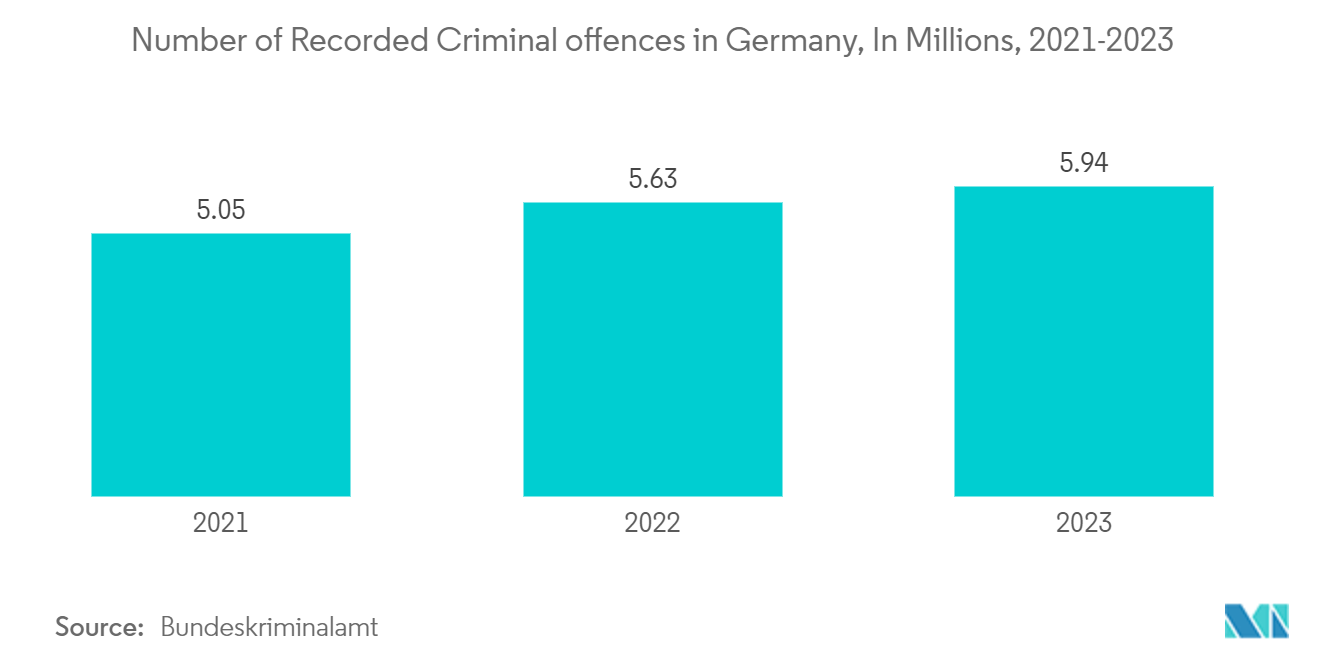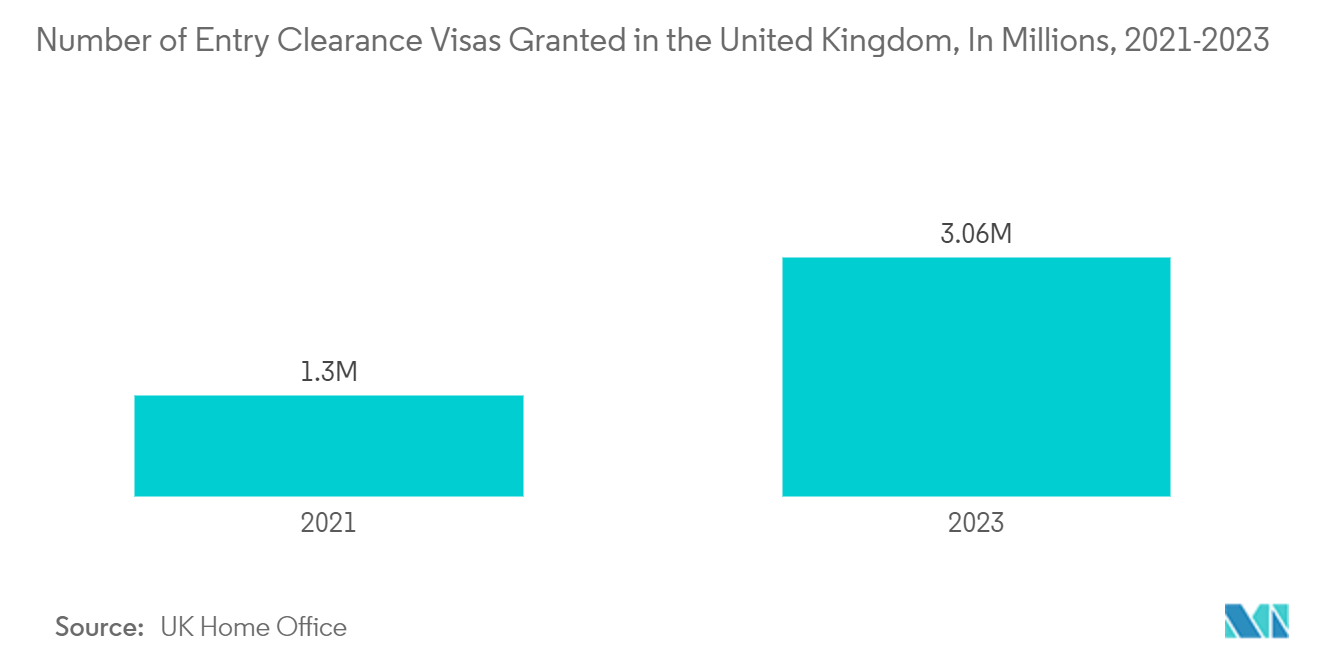Market Trends of Europe Government And Security Biometrics Industry
Facial Recognition to Hold Significant Market Share
- Facial recognition technology offers robust security measures by accurately distinguishing individuals based on their unique facial features, preventing unauthorized access to facilities, devices, or data. Government agencies utilize facial recognition to regulate access to secure premises or systems.
- For instance, in June 2023, the French government approved a law allowing the testing of facial recognition in public areas for three years. This law permits judicial examiners and intelligence agencies to use remote biometric identifiers in public places, with real-time application restricted to detecting terrorists, child abductions, and severe criminal offenses. Retrospective facial recognition applications on recorded videos require authorization from the prosecutor or examining judge for terrorism and serious crime investigations.
- In April 2023, the Swiss government allocated USD 27.18 million to upgrade the automated fingerprint matching system (AFIS) with biometric fingerprint recognition. AFIS has long been used by law enforcement authorities and governments for criminal investigations in electoral and migration processes. Swiss police state that AFIS processes over 340,000 identity applications annually from domestic and foreign law enforcement, customs, and migration authorities.
- Integration of facial recognition systems with surveillance cameras enables real-time identification of individuals in public areas, aiding law enforcement in monitoring and responding to potential criminal activity. In 2023, Germany registered 5.94 million crimes, necessitating effective methods for quick suspect identification. Facial recognition facilitates rapid identification by matching suspect images with databases of known criminals.
- Biometrics, including facial recognition, are increasingly adopted at airports to enhance operational efficiency. For instance, Germany announced in February 2024 that it would exclusively accept biometric photographs for official documents, streamlining the identification and verification process. Additionally, in May 2024, British travelers underwent new entry procedures into the European Union as part of the entry/exit system (EES), requiring facial photography and fingerprint scanning alongside passport checks.

United Kingdom to Witness Significant Growth
- Facial recognition technology serves as a powerful tool for law enforcement agencies, swiftly identifying individuals and cross-referencing them with criminal databases to investigate and prevent illegal activities. Its surveillance capabilities act as a deterrent, dissuading potential offenders. Moreover, it fosters collaboration among law enforcement agencies across jurisdictions, aiding in tracing criminal activities involving international travel.
- The United Kingdom planned to reintroduce facial recognition technology following a report revealing enhanced accuracy and reduced false positives in April 2023. The technology's consistent performance across racial and gender groups, with a false match rate of just 1 out of 6,000 individuals passing through the camera, underscores its reliability. Set at a default threshold of 0.6, Neoface achieves correct identification 89% of the time with a mere 0.017% false positive rate, as per the National Physical Laboratory.
- The demand for secure identity verification, particularly driven by clearance visas, fuels the need for stringent biometric procedures. With approximately 3.06 million entry clearance visas issued by the UK government in March 2023, biometric technologies offer a reliable means of ensuring visa holders' identity, reducing fraudulent access risks.
- In 2024, the United Kingdom will pilot a new face biometrics system for passport-free border checks at air and rail ports, aiming to streamline traveler entry processes. This initiative, reported by The Times, seeks to enhance user experience and efficiency, potentially replacing 270 gates over time as legacy passport desks are phased out.
- Biometric adoption in the United Kingdom is on the rise, fostering innovation and ecosystem growth. A 2023 survey by law firm Womble Bond Dickinson found that six out of 10 UK companies integrate biometrics into their operations. Among the 205 executives surveyed, 59% utilize biometrics, with only 20% having no plans for adoption. Fingerprint, facial recognition, voice recognition, iris scans, and ear data are among the biometric data types collected, with varying degrees of usage.


